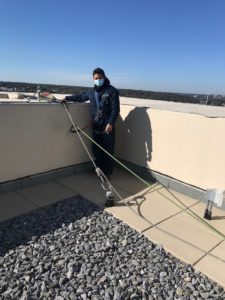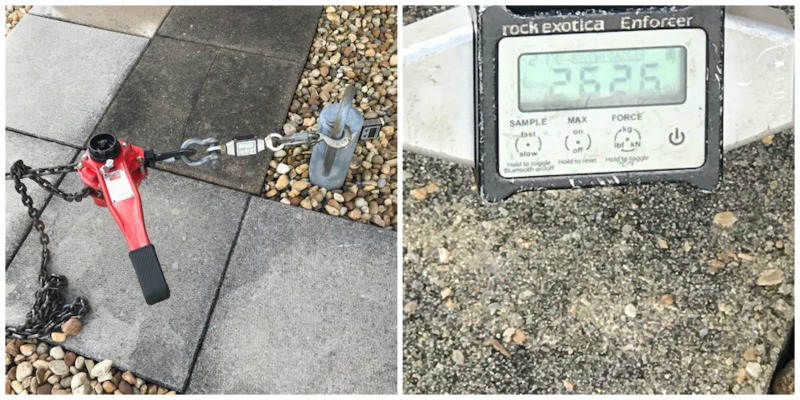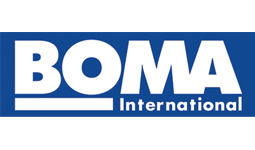Roof Anchor Installation & Certification

Expert Roof Anchor Design & Installation in DC, MD & VA
KEVCO Building Services can address your building’s roof anchor needs from design and fabrication to installation, inspection, testing, and certification. Each building — each roof — is unique; KEVCO wants to be your building’s partner in rooftop safety and compliance according to all OSHA and ANSI regulations.
When having exterior work performed on your building, first ask yourself these questions:
- Does my building have a roof anchor system?
- If my building has roof anchors, are they compliant with current OSHA/ANSI regulations?
- Do I need to install roof anchors?
What Are Roof Anchors & Why Are They Important?
Roof anchors play a critical role in the safety of exterior service and cleaning teams. These attachments typically fall under the umbrella term of “fall protection” and are used to connect lanyards and lifelines to a secure point along the top or sides of moderate and large commercial structures.
Despite the important role roof anchors play, many buildings don’t feature them in their initial design, making addressing a roof anchor design and installation service important.
Proper roof anchors can benefit your business by:
- Optimizing the safety of any crew working on the exterior of your building. We make the safety and security of all our team members a top priority. We want to ensure they have an effective and safe place to work at all times.
- Providing safe means of exterior services: cleaning, renovation, reconstruction, or any additional exterior services.
- Fulfilling ANSI/I-14 Window Cleaning Safety standards and all OSHA requirements.
- Offering increased mobility and security. KEVCO and other exterior service teams can work and provide services at peak efficiency and safety.
Your employees are one of your most valuable assets. Protect them with roof anchors from KEVCO.
Contact us to learn more about our roof anchor options.
Roof Anchor Installation Services
Roof anchors need to be addressed as they are the key component to ensuring safety and compliance with the I-14 Window Cleaning Safety standard and all ANSI/OSHA requirements for services to be performed on any building.
Roof anchors may consist of:
- Eyebolts
- Davits and sockets
- Outriggers
- Windscreen posts
- Columns
- Eyebeams
Adequate roof anchors don’t exist on a large number of buildings. KEVCO, in conjunction with the following roof anchor and engineering firms, can facilitate roof anchor installation on your building to ensure compliance with all current regulations and standards.
Our partners in roof anchor safety:
Peak Fall Protection – Alan Kates 
Summit Anchors – Gus Strats 
Engineering Consulting Services – Alexis Herr 
Vannoy & Associates, LLC – Ryan Smith PE 
Examples of Roof Anchor Systems

Examples of Roof Anchor Load Testing

Roof Anchor Design & Installation in Washington, DC, Maryland & Northern Virginia
Roof anchors play a critical role in professional window cleaning and exterior specialty services.
As leaders in fall protection and safety equipment in the United States, the aforementioned firms with whom KEVCO has partnered will ensure your building’s custom-designed safety solutions will place safety and functionality as priority number one for those working in and on your building for years to come.
Urgent OSHA Update
This is the latest update in response to the recent OSHA mandates on roof anchorage requirements in OSHA mandate CFR-1910.27.
This memorandum acknowledges that “due to a limited availability of qualified persons to inspect, test, and certify anchorages for RDS use, OSHA is providing employers and building owners additional time to comply with §1910.27(b)(1), provided that employers and building owners can demonstrate and document they are exercising due diligence to come into compliance with the standard’s requirements.”
OSHA will evaluate on a case-by-case basis.
Employers performing services on a building may be affected when the building owners experience difficulties with compliance in a timely manner. OSHA will evaluate the extent of the contractor’s efforts to comply or not perform work at a property during the delay in establishing compliance.








